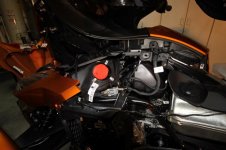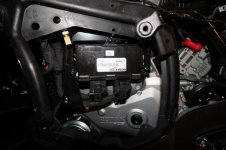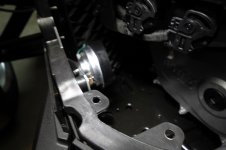bluestratos
New member
FYI Here some pictures that show the new location of the air filter, horn and back of alternator. The air filter has a round cover that comes off in seconds to allow you to pull the round cartridge filter out. The horn easy to get at now and the middle picture is the location where I am install my after market water tight fuse panel. I will tap the + directly off of the alternator using a 50 amp fuse then through the relay that is controlled with a diode protected tap off of an accessory controlled wire.
Attachments
Last edited:




